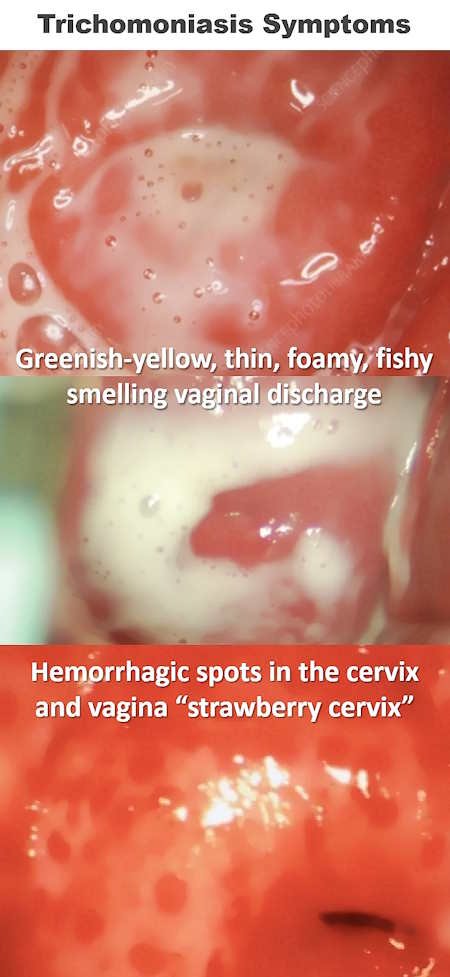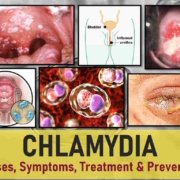Trichomoniasis (Trich): Causes, Symptoms, Diagnosis & Treatment
Trichomoniasis is a sexually transmitted infection (STI) caused by a tiny parasite called Trichomonas vaginalis. It’s one of the most common STIs, not just in the United States, but around the world.
Trichomoniasis is a significant public health concern because it often occurs alongside other STIs. Studies show that having trichomoniasis can increase your chances of getting other infections, including gonorrhea, human papillomavirus (HPV), herpes, and particularly HIV. On top of that, trichomoniasis can lead to serious issues like pregnancy complications, infertility, infections after surgery, and changes in cervical cells that can be harmful.
What is Trichomoniasis?
Trichomoniasis, often referred to as “trich,” is a common sexually transmitted infection (STI) caused by a one-celled parasite called Trichomonas vaginalis. This infection primarily affects the vagina in women and the urethra in men. Although it may not produce symptoms in all individuals, trichomoniasis can lead to irritation and discharge, as well as increase the risk of contracting other STIs, including HIV, if left untreated.
How Common is Trichomonas
Trichomonas vaginalis is the most common non-viral STI worldwide. In 2020, approximately 156 million new cases were reported among individuals aged 15 to 49, with the highest incidence rates observed in Africa and the Americas.
In the United States, trichomoniasis is a prevalent STI. According to the Centers for Disease Control and Prevention (CDC), around 3.7 million Americans are affected by trichomoniasis at any given time. The American Sexual Health Association (ASHA) and the CDC estimate that there are about one million new cases of trichomoniasis each year.
Trichomoniasis is more common in women than in men, particularly among women aged 14 to 49, with approximately 2.3 million cases reported. The infection is also more prevalent among older adults, especially those over the age of 50.
Trichomoniasis Causes
Trichomoniasis is primarily spread through sexual contact. The infection can transfer from one person’s vagina to another or through contact between a penis and a vagina. It can affect areas like the vulva, cervix, urethra, and, in rare cases, the prostate. Note: Trichomoniasis cannot survive in areas outside the genital and urinary tracts, so it generally does not spread via nonsexual routes. However it may be picked up from contact with damp or moist objects such as towels, wet clothing, or a toilet seat, if the genital area gets in contact with these.
Trichomonas vaginalis can also be transmitted vertically to newborns, leading to vaginitis, urinary tract infections, and respiratory infections that may be life-threatening.
Risk Factors for Trichomoniasis
The likelihood of transmitting trichomoniasis can increase due to several risk factors, including:
- Having multiple sexual partners
- A history of other STIs
- Previous trichomoniasis infections
- Engaging in unprotected sex without condoms or other barrier methods

Symptoms of Trichomoniasis
- Symptoms of Trichomoniasis in Women: Symptoms often include a greenish-yellow, frothy, fishy-smelling vaginal discharge accompanied by irritation and soreness in the genital area. Painful urination and discomfort during intercourse are also common, with severe cases causing inflammation and swelling around the genital area. Trichomoniasis can also lead to a condition known as “strawberry cervix,” where small red spots appear on the cervix due to inflammation from the infection.
- Symptoms of Trichomoniasis in Men: Many men with trichomoniasis show no symptoms, although some may experience a mild, frothy discharge from the penis and mild pain or discomfort during urination. Despite the absence of noticeable symptoms, men can still pass the infection to their partners.
Diagnosis of Trichomoniasis
Doctors usually suspect trichomoniasis in women with vaginal infections and in men with urethral infections. Diagnosis can be confirmed by examining a sample of discharge under a microscope to detect the presence of Trichomonas vaginalis. In cases where the organism is difficult to identify, especially in men, additional diagnostic methods like culture tests or nucleic acid amplification tests (NAATs) may be used. These advanced tests increase the accuracy of diagnosis by identifying the unique genetic material of the parasite. Testing for other STIs is also common since individuals with trichomoniasis may also have infections like gonorrhea or chlamydia.
Treatment of Trichomoniasis
Antibiotics for Trichomoniasis: Trichomoniasis is treated with antibiotics, commonly metronidazole or tinidazole. Treatment for women usually involves a seven-day antibiotic course, while men may receive a single-dose treatment. Both partners need to be treated simultaneously to prevent reinfection. In cases where a partner may not return for follow-up, women may receive medication or a prescription to give to their partner, a method known as expedited partner therapy.
Side effects of metronidazole may include a metallic taste, nausea, and a temporary decrease in white blood cells. Some women may experience a higher risk of developing a vaginal yeast infection (vaginal candidiasis) while on the medication.
Abstaining During Treatment
To prevent spreading the infection, individuals should refrain from sexual activity until they have completed treatment and the infection is fully cleared.
Prognosis
With proper treatment, trichomoniasis has a high cure rate of 90-95%, which increases further when both partners are treated. However, recurrent infections are common, particularly among sexually active individuals. The infection is also strongly linked to other STIs, such as HIV, gonorrhea, HPV, herpes, and chlamydia. In pregnant women, untreated trichomoniasis can lead to complications like preterm delivery, low birth weight, and an increased risk of pelvic inflammatory disease.
Complications
While many individuals experience only mild symptoms, untreated trichomoniasis can lead to more serious complications:
- Pregnancy Risks: Pregnant women with trichomoniasis are at increased risk of preterm delivery, low birth weight infants, and premature rupture of membranes.
- Increased STI Risk: Trichomoniasis raises susceptibility to other STIs, including HIV.
- Men’s Health Issues: In men, untreated trichomoniasis can lead to epididymitis, prostatitis, and infertility.
Prevention of Trichomoniasis
Here are general guidelines to prevent trichomoniasis and other STIs:
- Practice safer sex: Use a condom every time for oral, anal, or vaginal sex.
- Reduce STI exposure: Limit the number of sexual partners, avoid high-risk partners, practice mutual monogamy, or choose abstinence.
- Seek prompt diagnosis and treatment: Address infections early to avoid transmission.
- Identify and notify contacts: Encourage testing and treatment for sexual partners of infected individuals.
Conclusion
Trichomoniasis, though often mild or asymptomatic, is a significant health concern that can lead to complications if left untreated. Prompt treatment and preventive practices, such as safer sex and regular STI testing, can effectively manage and prevent trichomoniasis. Staying informed and taking proactive steps to protect sexual health can help individuals reduce the risk of trichomoniasis and other STIs, promoting a healthier, safer life.
Frequently Asked Questions (FAQs)
What treatments are available for trichomoniasis?
The main treatment options for trichomoniasis include:
- A single dose of metronidazole (2 grams)
- A single dose of tinidazole (2 grams)
- Metronidazole (500 mg) taken twice daily for seven days
How can I protect my partner from trichomoniasis?
To avoid passing trichomoniasis to your partner:
- Avoid contact between infected areas and your partner’s skin while you have symptoms and for at least seven days after treatment.
- Don’t allow your partner to touch infected areas.
- Avoid sharing sex toys.
- Wash your hands thoroughly with soap after touching any infected area.
Can I get reinfected with trichomoniasis?
Yes, reinfection is possible. This is why it is essential to notify your partner(s) to be tested and treated.
How can trichomoniasis spread if someone isn’t sexually active?
Trichomoniasis is almost exclusively spread through sexual contact, although not always through intercourse. It can spread through genital touching, and potentially through shared sex toys if not cleaned or covered with condoms. Though rare, trichomoniasis may also be contracted from wet towels, toilet seats, or swimming pools, but it cannot be spread by hugging or kissing. Since infections can go unnoticed, it’s possible to discover an infection long after initial contact.
How long can you have trichomoniasis without knowing it?
You can have trichomoniasis for months or even years without symptoms. Testing is the only way to know for sure, especially if a partner has tested positive or a healthcare provider identifies a high risk.
Can a woman get trichomoniasis on her own?
No, trichomoniasis requires direct sexual contact for transmission.
What are common symptoms of trichomoniasis in men and women?
In women, symptoms include a frothy discharge and genital discomfort. Men may experience mild symptoms or none at all.
How is trichomoniasis diagnosed?
Diagnosis is typically done through lab tests, such as microscopic examination of discharge samples or advanced NAATs.
Is trichomoniasis curable?
Yes, trichomoniasis is treatable with antibiotics.










